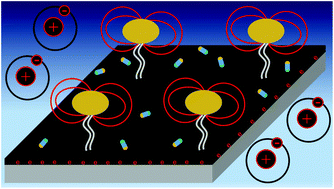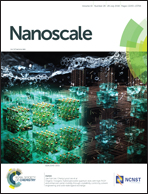Exploiting the signatures of nanoplasmon–exciton coupling on proton sensitive insulator–semiconductor devices for drug discovery applications†
Abstract
Multimodal sensing methods have a great promise in biosensing applications as they can measure independently several properties that characterise the biomolecular interaction to be detected as well as providing inherent on-chip validation of the sensing signals. This work describes the mechanisms of a concept of insulator–semiconductor field-effect devices coupled with nanoplasmonic sensing as a promising technology, which can be used for a wide range of analytical sensing applications. The developed method involves coupling of the localized surface plasmons (LSPs) within gold nanoparticles (AuNPs) and excitons within pH sensitive silicon nitride (Si3N4) nanofilms for screening inhibitors of kinase, which constitute an important class of chemotherapy drugs. In parallel to this optical sensing, the pH sensitivity of silicon nitride is used to detect the release of protons associated with kinase activity. By changing the insulator and AuNPs characteristics, this work demonstrates the nanoplasmonic-exciton effects taking place, enabling the developed platform to be used for screening kinase inhibitors and as a dual mode electro-optical biosensor for routine bio/chemical sensing applications.



 Please wait while we load your content...
Please wait while we load your content...